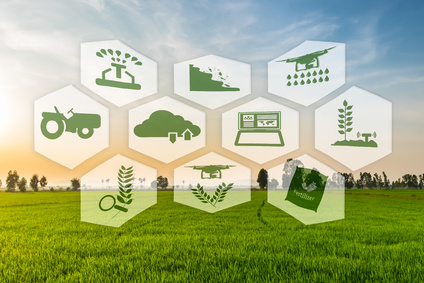Next-Gen Digital Agriculture
A I • Feb 13,2018


Digital technologies are transforming agriculture industry, making farm’s field operations more insight-driven and efficient. Agriculture is moving out of its traditional limits with global population growth, changes in markets demands and climate change.
Experts believe that in current situation local know-how is not enough in many cases and farmers need to find solutions and adapt to changing conditions by themselves. It means to be more efficient and productive, make decisions based on big data and predictive analytics. Time of intuition and personal experience is gone.
Modern growers need to make hundreds of decisions, including variety selection, weather control, planting dates, water requirement, disease management etc. But how we can automate all of these processes, taking into account that plants may grow under totally different conditions in European and American farms?
The answer to this question is the use of data-driven decisions, taking all the variable factors into consideration and doing it in real time. This can be done with machine algorithms backed by artificial intelligence. We all know that a shift of agriculture industry towards AI is inevitable but first of all huge amount of data must be collected and analysed. Statistical modelling will help to predict future events on a farm or in the field. By analysing historical weather, soil, fertilizer, and water data, farmers are getting and using powerful tools for making right decisions, which will increase their productivity and profitability.
Basically, right now farmers need to understand how to collect data, interpret it and validate it. Many startup companies are developing decision support tools, but many of them are still struggling with data collection, because of a lack of specific technological infrastructure for data collection. In farming industry, specific data collection technologies are being developed – spatial data, drones, soil, water and plant sensors, image recognition etc.
These technologies can collect a large amount of data that can be further analyzed and used for better decision making. For example, a farmer can detect a disease before it spreads in the field, identify water or fertilizer problems and many more. At the same time, current technological advancements have some limitations, such as a limit to the number of parameters that can be measured and the extent to which the data represents the whole field is still undetermined.
For example, a grid of sensors, installed on a relatively small number of plants can’t provide data that represents the entire field. Or, during a process of optimising crop nutrition, dozens and even hundreds of parameters should be considered, while the current technology allows measuring just two or three parameters, such nitrogen level or NDVI.
Another challenge is an interpretation of farming data. Machine learning is actively trying to solve this problem but new models and algorithms must be developed to make the data more useful. The near future will show how agriculture revolution will continue and at what pace but one thing is known sure – adaption and validation processes are going to be lengthy.
Author: AI.Business
If you like our articles, please subscribe to our monthly newsletter:
[mc4wp_form id=”763″]